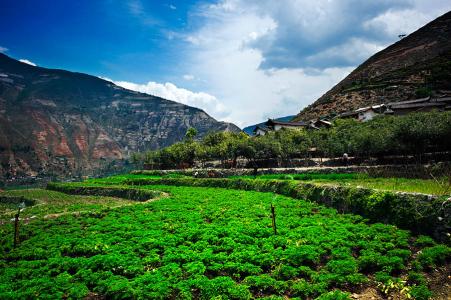Introduction of flavor and taste in the treatment of washed coffee and sun-cured coffee honey
Introduction of flavor and taste in the treatment of washed coffee and sun-cured coffee honey
Another method for the treatment of coffee berries is semi-washing. This method is developed on the basis of washing. The first step is the same as washing. When the fruit turns red, it is picked and put into the pool. The immature fruit floats and the ripe coffee fruit sinks. Remove immature coffee berries in this way. Then remove the silver peel of the ripe coffee berries with a special machine, spread the berries on the ground, dry them and then wet them, and finally use a special machine to grind off the dried flesh and take out the coffee seeds. These are raw coffee beans that have been semi-washed.
The most traditional way to treat raw coffee berries of imported coffee beans is Natural Processed coffee, also known as Dry Processed coffee. This is the most energy-saving way to treat raw coffee beans. This method is to sift the picked red fruit first, remove branches, soil and other sundries, and the immature coffee fruit will be removed on the sieve. Then put the coffee fruit directly on the concrete floor or viaduct bed (Indian raised beds) to dry. In the process of drying, it is often necessary to turn the sun manually to prevent hardening and mildew. Until the moisture drops below 12%, it usually takes nearly a month, and then is sent to a special machine to force peeling and shelling.
Imported coffee beans treated in this way are often defective and unattractive. Beans dried in the sun are often made of foreign bodies or stones. The flavor of the beans treated by this method is more complex, but it has the taste of the sun, the fruit flavor is very strong, and the consistency is better than the washing method. General Brazilian beans as well as Mantenin and mocha are typical sun-treated coffee beans. Basically all robusta coffee beans are treated in the sun.
The advantage of this raw coffee bean treatment method lies in: on the one hand, it saves water, on the other hand, it avoids mildew in the fermentation process and other problems that are not conducive to the quality of coffee beans. Mantenin produced in Indonesia is mostly semi-washed. Semi-washing is also used in Brazil in recent years. Brazil is the only country in the world that has both sun, water and semi-washing treatments.
. Natural sun treatment: retain all substances 22. Honey treatment: remove the peel and pulp and retain some or all of the mucous membrane (honey)
(3) washing method: the peel, pulp and mucous membrane were removed by washing and fermentation. This method is also known as the complete washing method (Fully Washed). Shampoo is the most common way for most coffee-producing countries in the world to handle Arabica coffee beans. Some areas also use advanced high-pressure washing machines to clean the peel, pulp and mucous membrane of coffee beans, so fermentation is no longer needed. This method of using a high-pressure washing machine to treat coffee beans is called "natural washing (Pulped Natural)".

Important Notice :
前街咖啡 FrontStreet Coffee has moved to new addredd:
FrontStreet Coffee Address: 315,Donghua East Road,GuangZhou
Tel:020 38364473
- Prev

The reason why the handle of extracted coffee needs to be watered-hand coffee extraction time
The reason why the handle of extracted coffee needs to put water-hand coffee extraction time one. Steaming: when making hand-brewed coffee, most people pay a lot of attention to the softness of the current and the freshness of the coffee powder. Steaming is also indispensable. Good steaming can fully infiltrate the coffee powder, activate the coffee activity and form a good gap between the coffee particles.
- Next

The difference between brewing coffee milk and not beating-the difference between coffee companion and milk powder
The difference between coffee milk bubbling and non-beating-the difference between coffee partner and milk powder is the first step: first, do fast and low beating until there is obvious resistance and continuous feeling; then do medium hit, and also have obvious resistance and continuous feeling; finally, do high beating, hit the whole to have resistance and continuous feeling. Tip: pay attention to the height of the twitch. Step 2: repeat the first step. In this way, the process of manual milking is completed. If
Related
- What is the meaning of lactic acid fermentation with coffee bean treatment?
- How to judge the state of foam by sound?
- How does the latte pull out the unicorn pattern? Come to get for a little trick to improve the flower pull!
- Will flower pulling affect the taste of the latte?
- Do you know the history of coffee?
- The difference between honey treatment and sun washing what is raisin honey treatment?
- What kind of milk can a novice use to make coffee foam to keep the foam longer? The correct method and skills of milking tutorial sharing
- Why do washed coffee beans taste sour? Flavor characteristics of washed Coffee
- Introduction to the skill of how to practice the size and height of water injection around the circle of hand-brewed coffee
- How do beginners practice coffee flower drawing from scratch?

